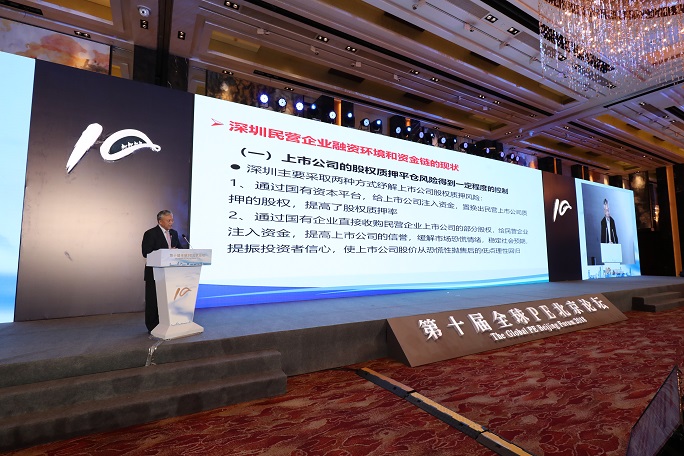How to Relieve the Financing Pressure for Private Enterprises?
Due to the policy deviation in the process of financial deleveraging and many other reasons, the second half of 2018 has seen a trend of halt of loans from banks to private enterprises. With adjustments at a larger scale, many private enterprises are experiencing enormous difficulties, posing threat to the healthy growth of the national economy.
Zhang Siping, founder of the Shenzhen Innovation and Development Institute, looks at the private sector in Shenzhen. In terms of the financing environment and capital chain, Zhang finds that
-the risks of equity pledge liquidation of listed companies are now relieved to some extent
-most non-listed private enterprises still face enormous difficulties in financing
-small and medium-sized private enterprises are struggling to survive
-non-governmental financing channels are still closed
Therefore, Zhang suggests that the government should
-have contingency plans for the well-functioning private enterprises including financial bailout and efforts to restore loans from banks
-do their deeds
Further, Zhang argues that there is an increasingly visible mismatch in terms of the economic performers and the preferred lenders for banks in China. Banks now are prone to lend to SOEs that are not efficient nor profitable, and only taking up 30 percent of China’s GDP, compared to the private sector’s 60 percent, because
-(in)direct and (in)visible differential policies towards SOEs and private enterprises, usually favoring SOEs
-the state-owned asset management system reduces the risks of lending loans to SOEs, as different levels of state-owned asset management authorities will bailout SOEs
-SOEs have the endorsement from the government and the government is the literal last payer of their debt to banks

Given that the predicament of private enterprises in getting loans from banks come not from their inability to make profit efficiently but from the unequal treatment received by private enterprises, compared to SOEs, Zhang contends that in order to ameliorate the situation, it is critical to carry on SOE reform. In particular, Zhang suggests that Chinese government should
-establish a fair competition environment for both SOEs and private enterprises to compete equally
-restructure the layout of state economy and establish a flexible adjustment mechanism allowing SOEs to enter or exit the market
-carry on reform to separate enterprises and capital from government
Zhang points out that financing problem is most visible and challenging for small and medium-sized private enterprises. With their smaller scale, fewer resources and more vulnerable to risks, small and medium-sized enterprises are looking for other venues for financing apart from commercial banks. In 2017, Shenzhen is home to 11200 state-level hi-tech enterprises, and 190000 small and medium-sized hi-tech enterprises, taking a lead in the country. Such a boom can never be achieved with the large number of angel investment funds, venture capital funds, industrial investment funds, and private equity funds. They provide sufficient capital to private enterprises of different levels of scales in different industries. Therefore, Zhang suggests that local governments should
-strike a balance between nurturing economic development and regulating the market
-cut off the administrative approvals required for a firm to enter the venture capital market


